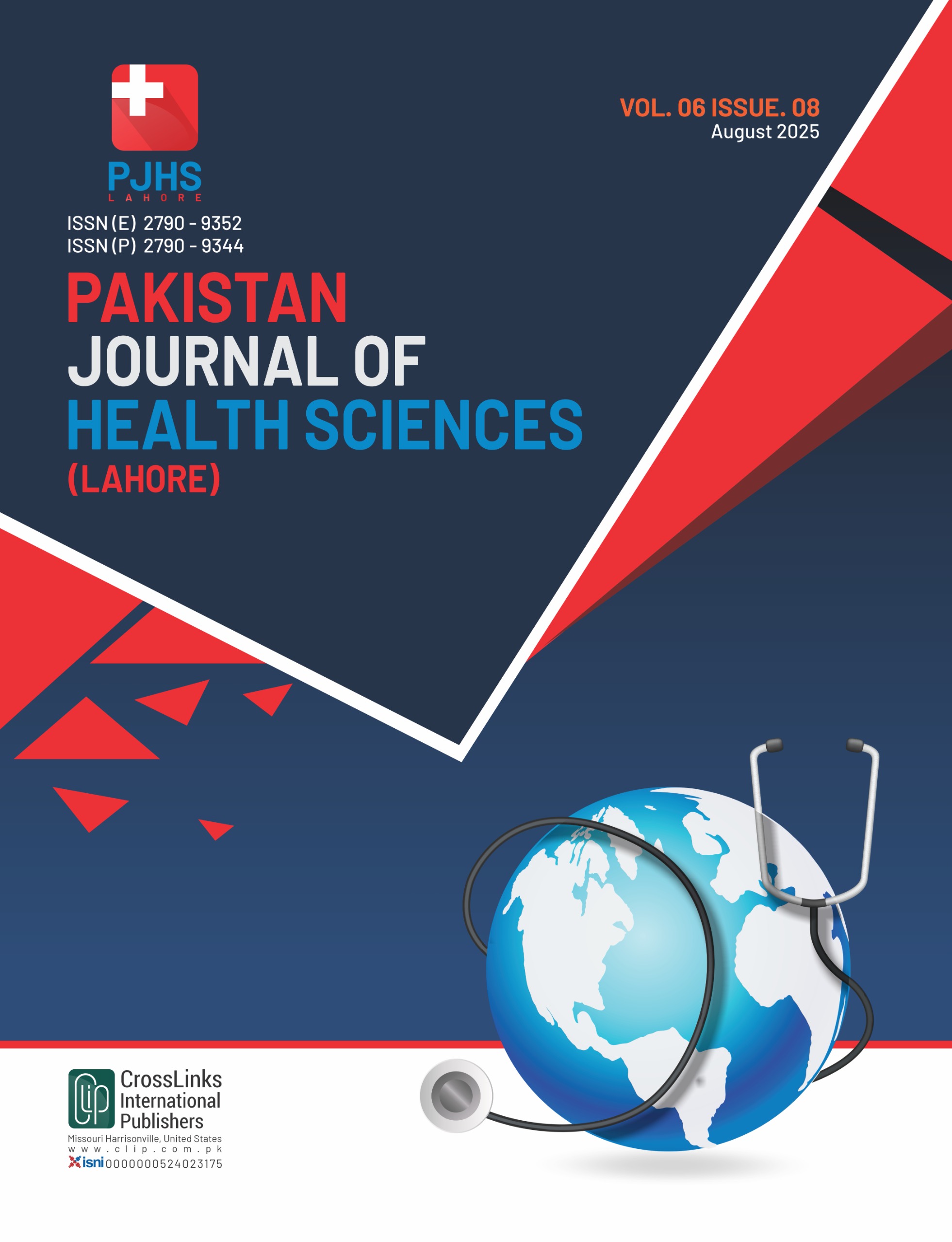Global Cancer Burden and Its Projected Growth by 2050: Trends, Disparities, and Future Implications
Global Cancer Burden and Its Projected Growth by 2050
DOI:
https://doi.org/10.54393/pjhs.v6i8.3460Abstract
Cancer is a leading cause of disease and death globally, with millions of new diagnoses occurring annually [1]. In 2022, about 2 million new cancer cases and approximately 9.7 million cancer-related fatalities were documented worldwide, with respiratory malignancies being the most prevalent, followed by breast, colorectal, prostate, and gastric cancers [2]. In economically disadvantaged regions, infections from pathogens including Helicobacter pylori, human papillomavirus (HPV), and hepatitis B significantly contribute to the increasing cancer rates, underscoring the urgent necessity for extensive prevention and immunization initiatives [3]. These global disparities in cancer incidence and survival are further exacerbated by socioeconomic factors, with access to early diagnosis, treatments, and healthcare systems being unequally distributed across regions [4]. Significant inequalities in cancer incidence and mortality exist globally, predominantly affected by the Human Development Index. In countries with very high levels of development, the age-standardized cancer incidence rate in 2022 was 285.7 cases per 100,000 persons, while in countries with lower development indices, it was only 110.6 cases per 100,000 [5, 6]. This disparity is also reflected in survival rates, as the mortality-to-incidence ratio (which compares the number of cancer deaths to the number of cancer cases) is almost twice as high in countries with lower levels of development compared to those with higher levels. For example, in 2022, the global mortality-to-incidence ratio was 46.6%, while in Sub-Saharan Africa, it exceeded 67%. Furthermore, men generally have higher rates of cancer incidence and death than women, and low- and middle-income nations, notably in Africa and Asia, confront challenges in managing increasing cancer cases, owing to insufficient resources for prevention, diagnosis, and treatment [7]. The worldwide cancer burden is projected to rise significantly by 2050. The number of new cancer cases is projected to increase by 76.6%, reaching 35.3 million, while deaths related to cancer are expected to rise by 89.7%, to 18.5 million. However, this increase will not be uniform across regions. In countries with lower development, cancer cases are expected to rise by 142.1%, compared to a 41.7% increase in highly developed countries. Similarly, cancer deaths in less developed countries are expected to rise by 146.1%, whereas in more developed countries, the increase will be just 56.8%. This widening disparity highlights the urgent need for enhanced healthcare infrastructure, including prevention, early diagnosis, and treatment programs in low-resource settings. The number of new cancer cases is projected to rise by 76.6%, reaching 35.3 million, while deaths due to cancer are likely to increase by 89.7%, to 18.5 million [6, 8].
References
Bray F, Ferlay J, Soerjomataram I, Siegel RL, Torre LA, Jemal A. Global Cancer Statistics 2018: GLOBOCAN Estimates of Incidence and Mortality Worldwide for 36 Cancers in 185 Countries. CA: A Cancer Journal for Clinicians. 2018 Nov; 68(6): 394-424. doi: 10.3322/caac.21492. DOI: https://doi.org/10.3322/caac.21492
Xia C, Dong X, Li H, Cao M, Sun D, He S, et al. Cancer Statistics in China and the United States, 2022: Profiles, Trends, and Determinants. Chinese Medical Journal. 2022 Mar; 135(05): 584-590. doi: 10.1097/CM9.0000000000002108. DOI: https://doi.org/10.1097/CM9.0000000000002108
Baj J, Forma A, Dudek I, Chilimoniuk Z, Dobosz M, Dobrzyński M, et al. The Involvement of Human Papillomavirus in Gastrointestinal Cancers. Cancers. 2022 May; 14(11): 2607. doi: 10.3390/cancers14112607. DOI: https://doi.org/10.3390/cancers14112607
Singh GK and Jemal A. Socioeconomic Inequalities in Cancer Incidence and Mortality. The American Cancer Society's Principles of Oncology: Prevention to Survivorship. 2018 Feb; : 23-32. doi: 10.1002/9781119468868.ch3. DOI: https://doi.org/10.1002/9781119468868.ch3
Cao W, Qin K, Li F, Chen W. Comparative Study of Cancer Profiles Between 2020 and 2022 Using Global Cancer Statistics (GLOBOCAN). Journal of the National Cancer Center. 2024 Jun; 4(2): 128-134. doi: 10.1016/j.jncc.2024.05.001. DOI: https://doi.org/10.1016/j.jncc.2024.05.001
World Health Organization (WHO). Cancer Rates by Human Development Index. 2022.
Opoku-Amankwah M. Knowledge, Attitude, Belief and Perception on Breast Cancer and Screening Practices among Ghanaian Immigrants Living in Germany and Compatriots Living in Ghana. Doctoral Dissertation, Hochschule für Angewandte Wissenschaften Hamburg.
Bizuayehu HM, Dadi AF, Ahmed KY, Tegegne TK, Hassen TA, Kibret GD, et al. Burden of 30 Cancers among Men: Global Statistics in 2022 and Projections for 2050 Using Population-Based Estimates. Cancer. 2024 Aug; : doi: 10.1002/cncr.35458. DOI: https://doi.org/10.1002/cncr.35458
Downloads
Published
How to Cite
Issue
Section
License
Copyright (c) 2025 Pakistan Journal of Health Sciences

This work is licensed under a Creative Commons Attribution 4.0 International License.
This is an open-access journal and all the published articles / items are distributed under the terms of the Creative Commons Attribution License, which permits unrestricted use, distribution, and reproduction in any medium, provided the original author and source are credited. For comments













